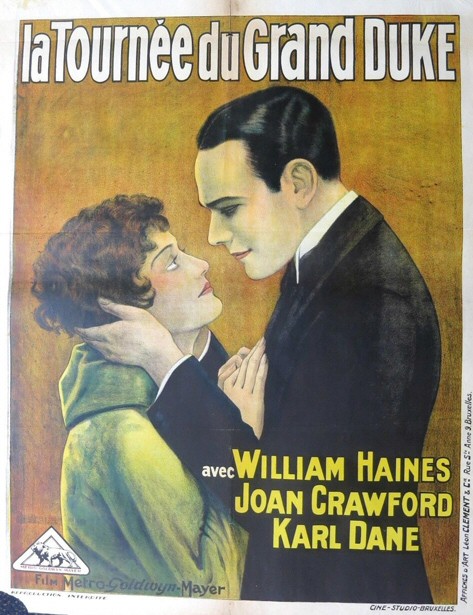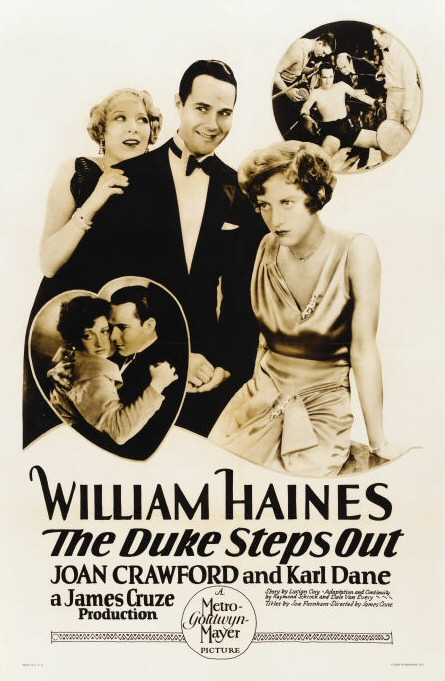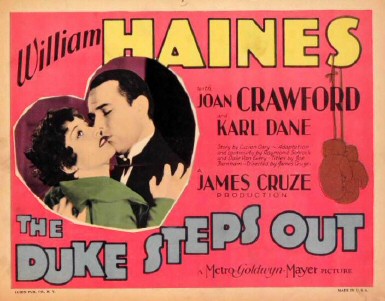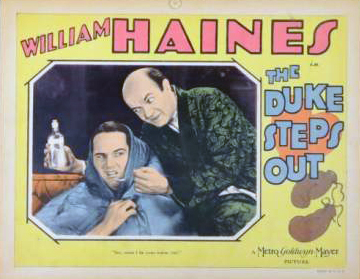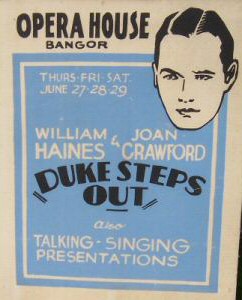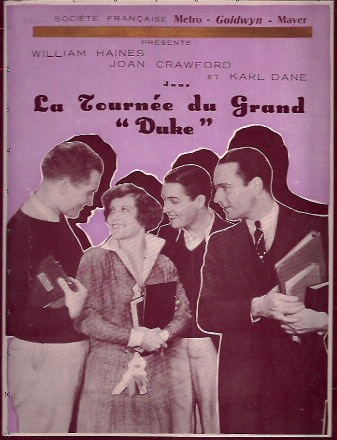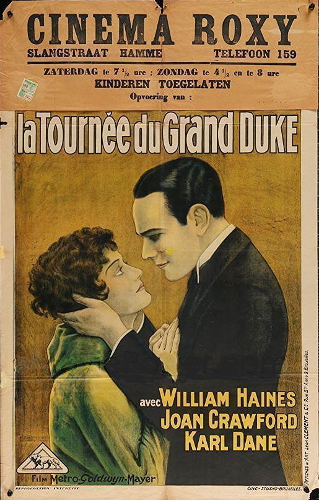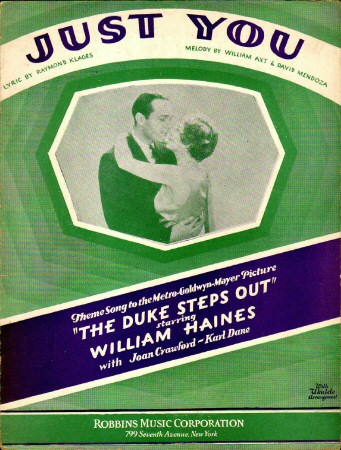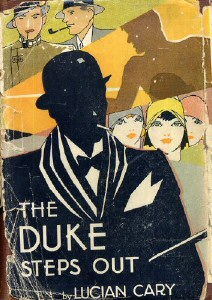|
Mordaunt
Hall
in the New York Times
April 15, 1929
The irrepressible William Haines is to be seen cavorting, kissing
and fighting in a picture called "The Duke Steps Out," which, except
for synchronized orchestral and sound effects, is silent. It is an
amusing chronicle in which Mr. Haines is permitted to do pretty much as
he will, and now that he is not impersonating an army or a navy cadet
one can pardon his interpretation of the Duke, whose last name is
Wellington, for this character happens to be the scion of a wealthy
family who is supposed to know how to use his fists. While he may
devote a certain amount of thought to uppercuts and jabs, his brain
apparently refuses to function over higher mathematics, Greek, Latin or
modern languages.
The Duke is at his best, however, when confronted by a pretty girl.
So infatuated is he with Sue Corbin that he gives his trainer and his
Swedish valet a worrying time by insisting on entering the
co-educational institution of Sierra as a student. Sue is the fairest
and the most popular of the co-eds and her chief pursuits are going to
football games and dances. She at first rebuffs the Duke, then smiles
and, just before Sierra and the rest of the world learn of the Duke's
pugilistic ability she becomes indignant because she believes that
young man is not serious in his suit.
James Cruze, producer of "The Covered Wagon" and a number of other
film achievements, directed this subject. His skill with the camera and
his keen sense of humor help as much as Mr. Haines's grimaces and
gestures to make this an entertaining feature.
It begins with an inspiring sight of a vast throng at a football
game and toward the close there are splendidly filmed scenes of a
prize-fight, which are shrewdly spliced in with stretches of William
Haines as the Duke giving and taking punches in the squared ring.
This Duke Wellington first looks seriously upon the captivating Sue,
impersonated by Joan Crawford, in a train. His method of approach might
sound the knell of any future flirtation in everyday life, but here
merely irritates the girl. Persistence is evidently a sound quality in
the Duke's nature, for despite Sue's aloofness and the frowns of other
admirers the fighting son of wealth not only wins favor but he does so
without permitting any of Sierra's young men to know how handy he is
with his fists.
During a sequence when Sue and other students are listening over the
radio they hear that the challenger for the pugilistic lightweight
championship is none other than Duke Wellington, and more than one of
the male students thank their lucky stars that they did not attempt to
carry out some of the threats they made against the Duke.
Mr. Cruze finishes his picture in a happy fashion. In the ringside
seats, while Duke is battling, are aged Professor Widdicomb and Sue's
father. They arrange that there's a happy ending.
A laughable episode is that dealing with the Duke's training, when
he has to look at his trainer and valet enjoying huge steaks while he,
after a hard day's grind on the road and in the gymnasium, is permitted
only a tiny lamb chop, which he likens to a necktie pin.
Karl Dane and Tenen Holtz contribute to the fun in this film. Miss Crawford is engaging and competent.
Harry Mines
in the Los Angeles Daily News (1929)
Haines,
always a charming and breezy comedian, outdoes many of his past efforts in this
clever tale of a pugilist who falls for a college beauty. He scores tremendously
in every sequence, particularly in those with Joan Crawford. Miss Crawford is
as gorgeous as ever, and offers a vivid performance.
Photoplay (1929):
Another
cream puff for the antics of the Metro-Goldwyn playboy Billy Haines.... A lightweight,
friends, but amusing.
|
 MGM silent. 62 minutes
(6 reels).
MGM silent. 62 minutes
(6 reels).
